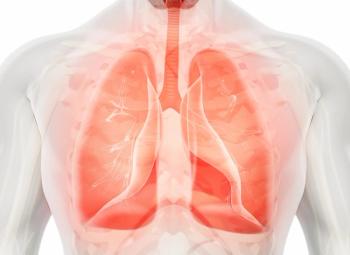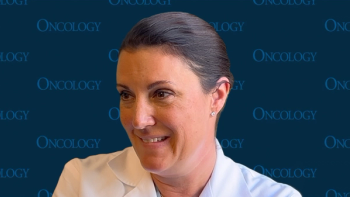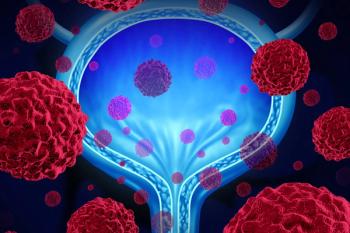
IBTR Rates With Margin Widths Not Clinically Meaningful in Breast Cancer
IBTR with the 1 mm and 2 mm cutoff found rates found the margin widths were small and not clinically meaningful.
Margin widths were small and not clinically meaningful from a 1 mm cutoff to a 2 mm cutoff, regarding rates of ipsilateral breast tumor recurrence (IBTR), according to results from the phase 3 NSABP B-35 trial (NCT00053898) presented during a press briefing from the American Society of Breast Surgeons.
At the first event, 4.8% of patients had IBTR with a less than 1 mm margin width, 3.0% had a 1 mm or more margin width, 4.4% had a margin width of less than 2 mm, and 2.9% had 2 mm or more. Invasive IBTR events occurred in 1.4%, 1.2%, 1.8%, and 1.0% for those with margin widths of less than 1 mm, 1 mm or more, less than 2 mm, and 2 mm or more, respectively. Noninvasive IBTR was noted in 3.4%, 1.8%, 2.6%, and 2.0%; distant recurrence in 0.0%, 0.5%, 0.2%, and 0.4%; contralateral breast cancer in 2.6%, 3.3%, 3.2%, and 3.2%; and angiosarcoma in the ipsilateral breast of 0.0%, 0.1%, 0.1%, and 0.0%.
The 10-year cumulative incidence of IBTR by margin width was 5.6% (3.7%-8.2%) for those with less than 1 mm and 4.0% (3.0%-5.2%) for those with 1 mm or more. Additionally, 24 patients did not have an IBTR event for those with a margin width of less than 1 mm compared with 66 patients in those with a margin width of 1 mm or more (P = .04).
The 10-year cumulative incidence of IBTR by margin width was 5.3% (3.8%-7.2%) for those with less than 2 mm margin width vs 3.8% (2.7%-5.2%) in those with 2 mm or more. There were no IBTR events in 39 patients with a margin width of less than 2 mm, and 49 had no events in the 2 mm or more (P = .05).
“Our findings only apply to post-menopausal women with estrogen receptor–positive ductal carcinoma in situ receiving whole breast irradiation and 5 years of adjuvant endocrine therapy,” Irene Wapnir, MD, chief of Breast Surgery in the Section of Surgical Oncology at Stanford Medicine, said during the conference. “The practice of re-excision lumpectomies for margin widths less than 1 mm or less than 2 mm should be reconsidered.”
Overall, 3104 patients were enrolled from January 2003 to June 2006, who were post-menopausal with ductal carcinoma in situ treated with lumpectomy and were estrogen receptor–positive, progesterone receptor–positive. Patients were stratified by age as either younger than 60 years or 60 years or older. Patients were given either 20 mg of tamoxifen per day plus 5 years of placebo plus whole breast irradiation; or 1 mg per day of anastrozole and 5 years of placebo plus whole breast irradiation.
IBTR for those with invasive disease (HR, 0.76; 95% CI, 0.40-1.43; P = .39) or ductal carcinoma in situ (HR, 0.87; 95% CI, 0.53-1.43; P = .59) were similar between the tamoxifen and anastrozole arms, and there were no significant differences.
“This gave us an opportunity to analyze the effect of margin width on IBTR and all breast cancer events,” Wapnir said.
Of note, pathologists who participated in this study had to submit a report form to the NSABP Biostatistical Center within 3 months of randomization. This included margins of DCIS resection (after re-excision, if done) with options including positive, indefinite, negative, or unable to evaluate margins. The second question included the distance from the surgical margin if the margins are negative.
The authors used the 1 mm cutoff (n = 2707) to assess patients and tumor characteristics. Overall, between the less than 1 mm group and the 1 mm or more, patients were given tamoxifen (54.0% vs 49.2%), anastrozole (46.0% vs 50.8%); were younger than 60 (45.2% vs 47.1%), 60 or older (54.8% vs 52.9%); White (87.1% vs 88.1%), Black (9.4% vs 7.6%); had a pathological tumor size of less than 1 cm (41.8% vs 54.6%), 1 cm or more (54.6% vs 42.9%), or unknown (3.6% vs 2.5%).
Reference
Wapnir I, Cecchini RS, Dignam JJ, et al. Margin width and local recurrence in the NRG Oncology/NSABP B-35 DCIS lumpectomy trial. Presented at the American Society of Breast Surgeons Press Conference. April 24, 2025.
Newsletter
Stay up to date on recent advances in the multidisciplinary approach to cancer.


















































































